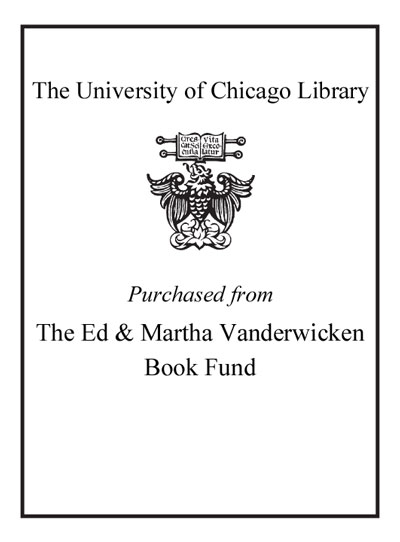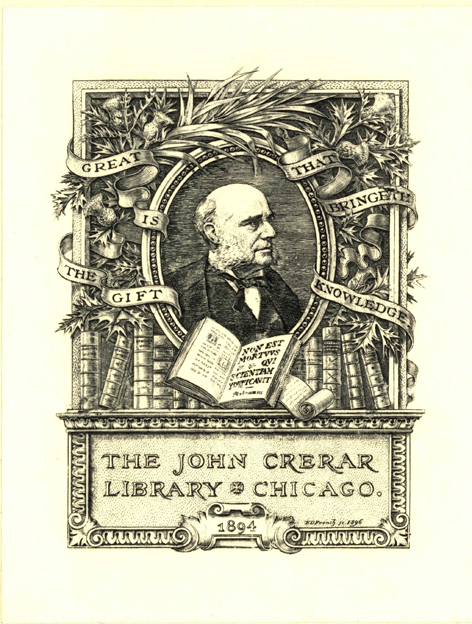Conditioning for strength and human performance /
Saved in:
| Imprint: | Philadelphia : Wolters Kluwer Health/Lippincott Williams & Wilkins, c2008. |
|---|---|
| Description: | xxiv, 488 p. : col. ill. ; 28 cm. + 1 CD-ROM (4 3/4 in.) |
| Language: | English |
| Subject: | |
| Format: | Print Book |
| URL for this record: | http://pi.lib.uchicago.edu/1001/cat/bib/6816422 |
Table of Contents:
- Part 1. Basic Science
- Chapter 1. Bioenergetics
- Introduction
- Enzymes
- The "Creation" of Chemical Energy
- Energy Systems
- The Phosphocreatine System
- Regulation of Energy Production
- The Glycolytic System
- The Oxidative System
- Lactate
- Summary of Catabolic Processes in the Production of Cellular Energy
- Efficiency of the Energy-Producing Pathways
- Limiting Factors of Performance
- Oxygen Consumption
- Metabolic Specificity
- Summary
- Chapter 2. The Cardiorespiratory System
- Introduction
- Cardiovascular System
- Morphology of the Heart
- Cardiac Cycle
- Heart Rate and Conduction
- Cardiac Output
- Vasculature
- Blood Pressure
- Respiratory System
- Pressure Differentials in Gases
- Oxygen and Carbon Dioxide Transport
- Blood
- Cardiovascular Response to Acute Exercise
- Cardiac Output
- Heart Rate
- Stroke Volume
- Cardiac Drift
- a-Vo[subscript 2] Difference
- Distribution of Cardiac Output
- Blood Pressure
- Pulmonary Ventilation During Exercise
- Cardiovascular Adaptations to Training
- Cardiac Output and Stroke Volume
- Heart Rate
- Blood Pressure
- Cardiac Morphology
- Respiratory Adaptations to Training
- Ventilatory Equivalent and Minute Ventilation
- Blood Volume Adaptations to Training
- Environmental Factors Affecting Cardiorespiratory Function
- Cardiorespiratory Response to Exercise in the Heat
- Effect of Altitude on the Cardiorespiratory Response
- Summary
- Chapter 3. The Neuromuscular System: Anatomical and Physiological Bases and Adaptations to Training
- Introduction
- The Neuron
- Reflexes and Involuntary Movements
- Proprioception and Kinesthesis
- Higher Nerve Centers and Voluntary Muscular Control
- The Pyramidal System
- The Extrapyramidal System
- The Proprioceptive-Cerebellar System
- Gross Structure of Skeletal Muscle
- Microscopic Structure of Skeletal Muscle
- Structure of the Muscle Fiber
- Muscle Fiber Types
- Structure of the Myofibril and the Contractile Mechanism
- The Sliding-Filament Theory of Muscle Contraction
- Gradation of Force
- Types of Muscle Actions
- Isometric Muscle Actions
- Dynamic Constant External Resistance Muscle Actions
- Isokinetic Muscle Actions
- Concentric and Eccentric Muscle Actions
- Neuromuscular Adaptations to Resistance Training
- Muscular Strength Adaptations
- Muscle Fiber Adaptations
- Nervous System Adaptations
- Metabolic Adaptations
- Endocrine Adaptations
- Summary
- Chapter 4. The Skeletal System
- Introduction
- Structure of the Skeletal System
- Bone Tissue
- Ligamentous Tissue
- Cartilage
- Articulations
- Functions of the Skeletal System
- Structure and Protection
- Movement
- Blood Cell Production
- Growth of the Skeletal System
- Primary Bone Growth in the Epiphysis
- Adaptations of the Skeletal System to Loading
- Wolff's Law
- Minimal Essential Strain
- Training Adaptations to the Skeletal System
- The Skeletal System and Health
- Bone Density and Health
- Spinal Alignment Maladies
- Female Athletic Triad
- Exercise Prescription to Promote Bone Density
- Loading Speed
- Rate and Frequency of Loading
- Direction of Loading and Response
- Intensity of Exercise
- Frequency of Training
- Vibration
- Summary
- Chapter 5. Biomechanics of Conditioning Exercises
- Introduction
- Biomechanical Concepts for Strength and Conditioning
- Force-Velocity-Power Relationship
- Musculoskeletal Machines
- Lever Systems
- Wheel-Axle Systems
- Biomechanics of Muscle Function
- Length-Tension Effect
- Muscle Angle of Pull
- Strength Curve
- Line and Magnitude of Resistance
- Sticking Region
- Muscle Architecture, Strength, and Power
- Multiarticulate Muscles, Active and Passive Insufficiency
- Body Size and Shape and Power-to-Weight Ratio
- Balance and Stability
- Factors Contributing to Stability
- Initiating Movement or Change of Motion
- Stretch-Shortening Cycle
- Biomechanics of Resistance Machines
- Free Weights
- Gravity-Based Machines
- Hydraulic Resistance
- Pneumatic Resistance
- Elastic Resistance
- Machines Versus Free Weights
- Summary
- Chapter 6. Training Responses and Adaptations of the Endocrine System
- Introduction
- The Endocrine System
- What Are Hormones?
- Endocrine Tissues
- Hormone Transportation Routes
- Types of Hormones
- Hormone Production
- Hormonal Transport and Binding Proteins
- Factors Affecting Circulating Concentrations
- Trophic Hormones and Pulsatility
- Hormonal Rhythms
- Anticipatory Responses
- Biocompartments
- Receptors and Cell Signaling
- Regulating Hormonal Levels
- Hormones Vital to Exercise
- Testosterone
- Cortisol
- Testosterone/Cortisol Ratio
- Growth Hormone
- Insulin and Glucagons
- Epinephrine
- Norepinephrine
- Aldosterone
- Antidiuretic Hormone
- Thyroid Hormones
- Calcium-Regulating Hormones
- Effects of Exercise on the Endocrine System
- Acute and Chronic Training Adaptations
- Responses and Adaptations of Hormones to Endurance Exercise
- Acute Responses to Resistance Exercise
- Long-Term Adaptations to Resistance Exercise
- Overtraining and the Endocrine System
- Using the Endocrine System to Monitor Training
- Optimizing the Training Program
- Goal: Muscle Hypertrophy
- Goal: No Muscle Hypertrophy
- Goal: High-Power Performance
- Goal: Peak Performance
- Goal: Avoiding Overtraining
- Summary
- Chapter 7. Nutrition
- Introduction
- Energy Needs
- Carbohydrate Intake
- Protein Intake
- Fat Intake
- Training Nutrition
- Nutrient Timing
- Carbohydrate-Protein Ratio
- Vitamin and Mineral Intake
- Vitamin E
- Vitamin C
- Minerals
- Diets
- Very High Carbohydrate, Very Low Fat Diets
- High-Carbohydrate, Low-Fat Diets
- Low-Carbohydrate, High-Protein Diets
- Low-Carbohydrate, High-Fat, High Protein (Ketogenic) Diets
- Summary
- Part 2. Organization and Administration
- Chapter 8. Test Administration and Interpretation
- Introduction
- Purpose of Testing
- Test Selection
- Validity
- Reliability
- Assessment
- Medical History and PAR-Q
- Physician Release
- Nutrition
- Needs Analysis
- Test Interpretation
- Order Scales
- Mathematical Measures
- Distribution of Scores
- Variability
- Standardized Scores
- Summary
- Chapter 9. Warm-up and Flexibility
- Introduction
- Warm-up
- Flexibility
- Normal Static Flexibility
- Flexibility and Injury Risk
- Assessing Flexibility
- Development of Flexibility
- Biomechanical Effects of Stretching
- Prophylactic Effects of Stretching
- Summary
- Chapter 10. Resistance Exercise Techniques and Spotting
- Introduction
- Benefits of Resistance Training
- Safety
- Spotting
- Exercise Apparel
- Resistance-Training Technique
- Resistance-Training Exercises
- Summary
- Chapter 11. Facility Administration and Design
- Introduction
- Facilities and Equipment
- Layout and Scheduling
- Maintenance and Safety
- Legal Duties and Concepts
- Types of Standards
- Applying Standards of Practice to Risk Management
- Duties and Responsibilities: Liability Exposure
- Preparticipation Screening and Clearance
- Personnel Qualifications
- Program Supervision and Instruction
- Facility and Equipment Setup, Inspection, Maintenance, Repair, and Signage
- Emergency Planning and Response
- Records and Record Keeping
- Equal Opportunity and Access
- Participation in Strength and Conditioning Activities by Children
- Supplements, Ergogenic Aids, and Drugs
- Policies and Procedures
- Summary
- Part 3. Exercise Prescription
- Chapter 12. Strength and Conditioning for Sport
- Introduction
- Basic Training Principles
- Specificity and Transfer-of-Training Effect
- Explosive Strength and Power
- Program Planning
- Single Sets Versus Multiple Sets
- Periodization
- Training Advanced Athletes
- Summated Microcycles
- Summary
- Chapter 13. Resistance Exercise Prescription
- Introduction
- Needs Analysis
- Acute Program Variables
- Exercise Selection
- Exercise Order
- Loading
- Volume
- Rest Intervals
- Frequency and Workout Structure
- Muscle Action
- Repetition Velocity
- Resistance-Training Prescription
- Muscular Strength
- Muscular Power
- Muscular Hypertrophy
- Local Muscular Endurance
- Progression
- Progressive Overload
- Variation
- Specificity
- Summary
- Chapter 14. Improving Aerobic Performance
- Introduction
- Factors That Influence Aerobic Exercise Performance
- Approaches to Aerobic Training
- Continuous Training
- Fartlek Training
- Interval Training
- Repetitions
- Organizing Aerobic Exercise Training
- General Preparation Phase
- Special Preparation Phase
- Precompetition Phase
- Competition Phase
- Summary
- Chapter 15. Plyometric, Speed, and Agility Exercise Prescription
- Introduction
- The Stretch-Shortening Cycle
- Impacting Factors
- Plyometrics
- Terminology
- Developmental Sequence
- Intended Purpose
- Acute Training Variables
- Linear Sprinting
- Developmental Sequence
- Sprinting Gait
- Acute Training Variables
- Agility
- Developmental Sequence
- Impacting Factors
- Effects of Movement Velocity
- Effects of Angles
- Effects of Anticipation
- Acute Training Variables
- Speed and Agility Exercises
- Summary
- Part 4. Special Topics
- Chapter 16. Foundations of Strength Training for Special Populations
- Introduction
- Geriatrics
- Normal Aging and Sarcopenia
- Osteoporosis
- Arthritis
- Pediatrics
- Healthy Children and Adolescents
- Cerebral Palsy
- Mental Retardation and Down's Syndrome
- Muscular Dystrophy
- Neuromuscular Disease
- Stroke
- Fibromyalgia
- Postpolio Syndrome
- Multiple Sclerosis
- Spinal Cord Injury
- AIDS/HIV
- Chronic Obstructive Pulmonary Disease
- Cardiovascular Disease
- Obesity
- Diabetes Mellitus
- Cancer
- Pregnancy
- Summary
- Chapter 17. Principles of Injury Prevention and Rehabilitation
- Introduction
- Preparticipation Physicals
- Roles of Health Care Professionals Involved in Injury Prevention and Rehabilitation
- Injury Classification
- Phases of Tissue Healing: Clinical Treatment and Exercise Considerations
- Inflammatory Phase
- Repair Phase
- Remodeling Phase
- Return-to-Activity Phase: The Role of the Interval Program
- The Interval Sport-Return Program
- Warm-up
- Alternate-Day Performance Scheduling
- Integration with Conditioning
- Progressive Stages of Intensity
- Proper Biomechanics and Evaluation of Mechanics
- Cool-Down or Aftercare
- Overview of Joint Biomechanics and Exercise Applications
- Overview of Knee Biomechanics and Exercise Applications
- Overview of Shoulder Biomechanics and Exercise Applications
- Overview of Spine Biomechanics and Exercise Applications
- Summary
- Chapter 18. Ergogenic Aids
- Introduction
- Branched-Chain Amino Acids
- Caffeine
- Colostrum
- Creatine
- Essential Amino Acids
- Glucosamine
- Glutamine
- Glycerol
- Green Tea Extract
- HMB
- Hydration
- Pre- and Postworkout Nutrition
- Other Potential Ergogenic Aids
- Summary
- Chapter 19. Implement Training
- Introduction
- Similarity in Training Programs
- Relying on Science
- Lack of Implement-Training Research
- Training Principles
- Transferability of Implement Training to Sports Performance
- Water-Filled Implements
- Implement Training Should Supplement Traditional Methods
- Program Design
- Description of Suggested Training Implements
- Kegs
- Logs
- Water-Filled Dumbbells
- Tires
- Kettlebells
- Chains
- Sandbags
- Description of Implement Exercises and Examples of Workouts
- Summary


